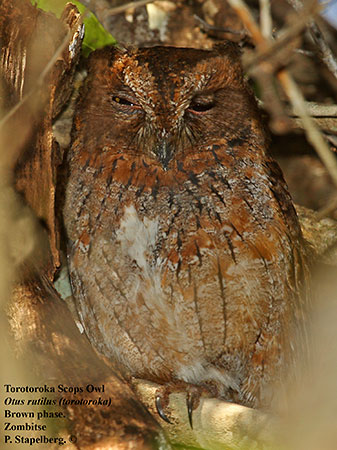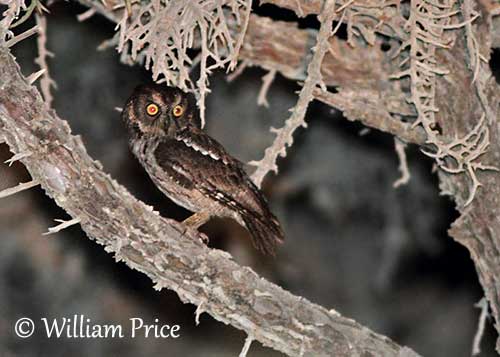
Fr: Petit-duc torotoroka
Ang: Torotoroka Scops-Owl
All: Torotoroka-Zwergohreule
Esp: Autillo de Madagascar
Ita: Assiolo torotoroka
Nd: Westelijke Madagaskardwergooruil
Sd: västlig madagaskardvärguv
Photographers:
Jean-Claude Billonneau
Photographe-témoin de la Beauté du Monde
William Price
PBase-tereksandpiper & Flickr William Price
Dubi Shapiro
Dubi Shapiro Photo Galleries
Philip Stapelberg
GALLERY
Text by Nicole Bouglouan
Sources:
HANDBOOK OF THE BIRDS OF THE WORLD Vol 5 by Josep del Hoyo-Andrew Elliott-Jordi Sargatal - Lynx Edicions - ISBN: 8487334253
OWLS OF THE WORLD – By Claus König, Friedhelm Weick and Jan-Hendrik Becking - IBSN 978-0-7136-6548-2
The Birds of Africa: Volume VIII: The Malagasy Region: Madagascar, Seychelles, Comoros, Mascarenes - Par Roger Safford, Frank Hawkins – ISBN: 1408190494, 9781408190494- Editeur: A&C Black, 2013
Owls of the World - A Photographic Guide: Second Edition – By Heimo Mikkola – Editeur: A&C Black, 2014 – ISBN: 147290592X, 9781472905925
Wikipedia, the free encyclopaedia
Torotoroka Scops-Owl
Otus madagascariensis
Strigiformes Order – Strigidae Family
INTRODUCTION:
The Torotoroka Scops-Owl of W Madagascar is now a full species. It was formerly a subspecies of the Rainforest Scops-Owl (O. rutilus). It is endemic to Madagascar where it frequents forest and wooded habitats along W and S coasts. Both species differ subtly in morphology, and they have different voices.
The Torotoroka Scops-Owl is not recognized by Birdlife International and requires further study.

The brown morph resembles previous but it is browner.
The rufous morph is very rare. It has reddish-brown plumage overall, with pale orange tinge and dark streaks on the upperparts, and white bars, dark streaks and vermiculations on the underparts.
RANGE:
The Torotoroka Scops-Owl is found in W and SW Madagascar.
HABITAT:
The Torotoroka Scops-Owl frequents the drier lowland western forests and the central plateau of the island. It can be seen in degraded areas, and sometimes in trees within villages, or near human habitations. It is not found at high elevations.
CALLS AND SONGS: SOUNDS BY XENO-CANTO
The Torotoroka Scops-Owl utters less pure notes than O. rutilus. The male gives slower series of 3-7 purring notes “gurrok-gurrok-gurrok…gurrerok…”. This series can be repeated many times at varying intervals.
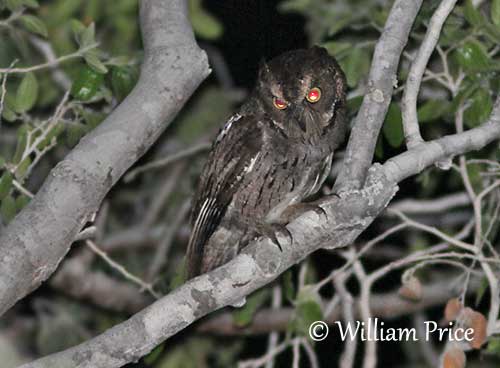
BEHAVIOUR IN THE WILD:
The Torotoroka Scops-Owl feeds mainly on insects, especially moths, crickets and beetles. It probably takes small vertebrates such as mice, frogs and geckos. The Otus species are primarily insect-eaters owls.
It hunts while flying from tree to tree, and even catches moths on the wing. It also gets food items from the ground and uses both bill and talons to catch the prey.
There is no information on the breeding and nesting behaviour of this species.
The owls of genus Otus are usually monogamous with long-term pair-bonds. The timing of breeding is related to prey availability, and the Torotoroka Scops-Owl probably breeds in the dry season or towards the end of it, so that the young fledge early in the wet season, when insects are abundant.
The Torotoroka Scops-Owl is apparently resident.
In flight, the tail appears conspicuously longer than that of O. rutilus, but both species have rounded wings. Like in most Strigidae species, the flight is silent and agile.
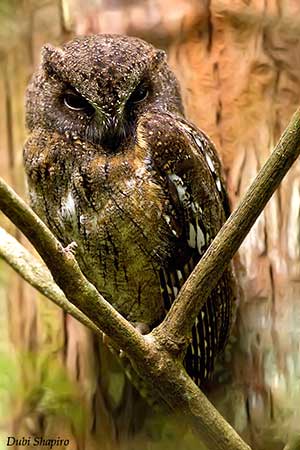
REPRODUCTION OF THIS SPECIES:
From some observations, the Torotoroka Scops-Owl is documented nesting on the ground. However, several other nests were found in natural tree cavities, about 2 metres above the ground.
The female lays 2-5 white eggs. Incubation and nesting periods are unknown.
PROTECTION / THREATS / STATUS:
The status of the Torotoroka Scops-Owl is currently unknown. Like all Madagascar bird species, it is vulnerable to forest clearance and degradation of the habitat. The species is probably relatively common in suitable habitat, but more information is required.
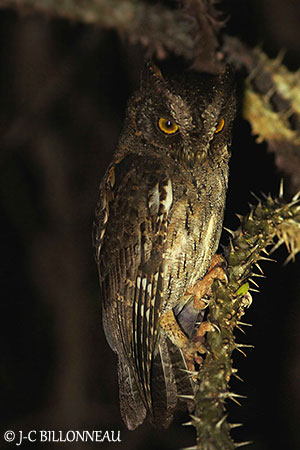
DESCRIPTION OF THE BIRD:
Biometrics:
Length: 20-22 cm
Weight: 85-115 g
The Torotoroka Scops-Owl resembles grey morph O. rutilus, and it has longer tail of 82-88 mm, whereas the Rainforest Scops-Owl has a tail of 74-82 mm.
Three morphs exist, but the commonest is the grey morph. The upperparts are pale brownish-grey with prominent dark streaks. There are some white areas on the scapulars that form a pale stripe across the closed wings. On the upperwing, the flight-feathers are brownish-grey with whitish bars bordered with blackish. The long tail shows similar barred pattern.
The underparts are pale grey with long, narrow, dark shaft-streaks, dark vermiculations and whitish bars.
On the head, the ear-tufts are relatively small. The facial disk is grey, but paler towards the dark ruff.
The bill is blackish. The eyes are yellow with pinkish eyelids. The tarsi are well-feathered whereas the toes are bare, pale greyish with dark claws.
Male and female have similar plumage but the female is more than 15% heavier than male.
The juvenile has strongly barred uppertail-coverts. The tips of the tail feathers are more pointed than those of the adults.
